Every pyramid needs a top, and the capstone of manual-transmission wagons that were sold new in North America is this unlikely beast. Cadillac built just under 1800 CTS-V wagons, and only 514 were manuals. The 6.2-liter supercharged V-8 advertised 556 hp; Recaro front buckets and a limited-slip diff were among the available options. Magnetic ride control and six-piston Brembo calipers were standard. RWD allowed for some truly epic smoky burnouts for those so inclined. 0–60 mph came up in just over 4 seconds. Prices are a little hard to peg because the number of transactions is small, but the lowest-mileage cars can certainly crack $100,000. Even that price seems like a bargain for a very special car, one with the fingerprints of “Maximum” Bob Lutz all over it.
10 modern manual wagons collectors should watch

Anyone paying even the slightest attention to the automotive world realizes that the station wagon is the automotive equivalent of what paleontologists refer to as a “dead clade walking.” Taken from the film Dead Man Walking, the term refers to groups of animals that barely survive an extinction event; instead, they linger for a bit and then finally die out.
The mainstream abandoned wagons for SUVs decades ago, but a small subset of enthusiasts recognize them for what they are—cars as rewarding to drive as their sedan counterparts, with some added practicality. The cognoscenti refer to them as long-roofs, hipster short-form to distinguish them from their grandparents’ Colony Parks and Country Squires. The holy grail is a manual-transmission long-roof.
Here’s a quick rundown of what’s out there from the last 25 years, with some purely subjective ratings.
1999–2004 BMW E46 and 2005–11 E90 Touring

Fun to drive: 5 / 5
Reliability and maintenance expense: 3.5 / 5
Pros: Safe, solid, sporty, and handsome
Cons: With BMW parts prices, minor irritations can add up quickly.
BMW was somewhat late to the game in offering wagons in the United States. Mercedes had been doing so with regularity since the 1970s, but it wasn’t until the early ’90s that BMW decided to offer the E34 5 Series Touring (or wagon, in BMW-speak) in the states. By the time the car’s successor—the very pretty E39—was introduced, manual transmissions had become almost mythical in the RWD-only 5 Series. The 3 Series was the real sweet spot for BMW wagons in the U.S. market. The E46 generation (1998–2005) was the first officially offered here (there are many gray-market E30 and E36 wagons in the U.S. and almost all are manuals). Sold in six-cylinder 323i and 325i form in either RWD or AWD, these are great and highly sought-after cars that will do 300,000-plus miles with the usual BMW maintenance to things like seals, axle shafts, cooling systems, and power windows.
The car’s successor, the E90/E91 (2006–13) was equally desirable, with added refinement and power. Many of the pain points are the same, with the addition of a failure-prone electric water pump. Expect to pay anywhere from $15,000 to $25,000 for a manual depending on miles, condition, and options. Rear-drive cars are prized for their lightness and simplicity and carry a slight premium in warm climates. A good E46 or E90/E91 is probably the gold standard for European performance wagons, both in driving enjoyment and reliability.
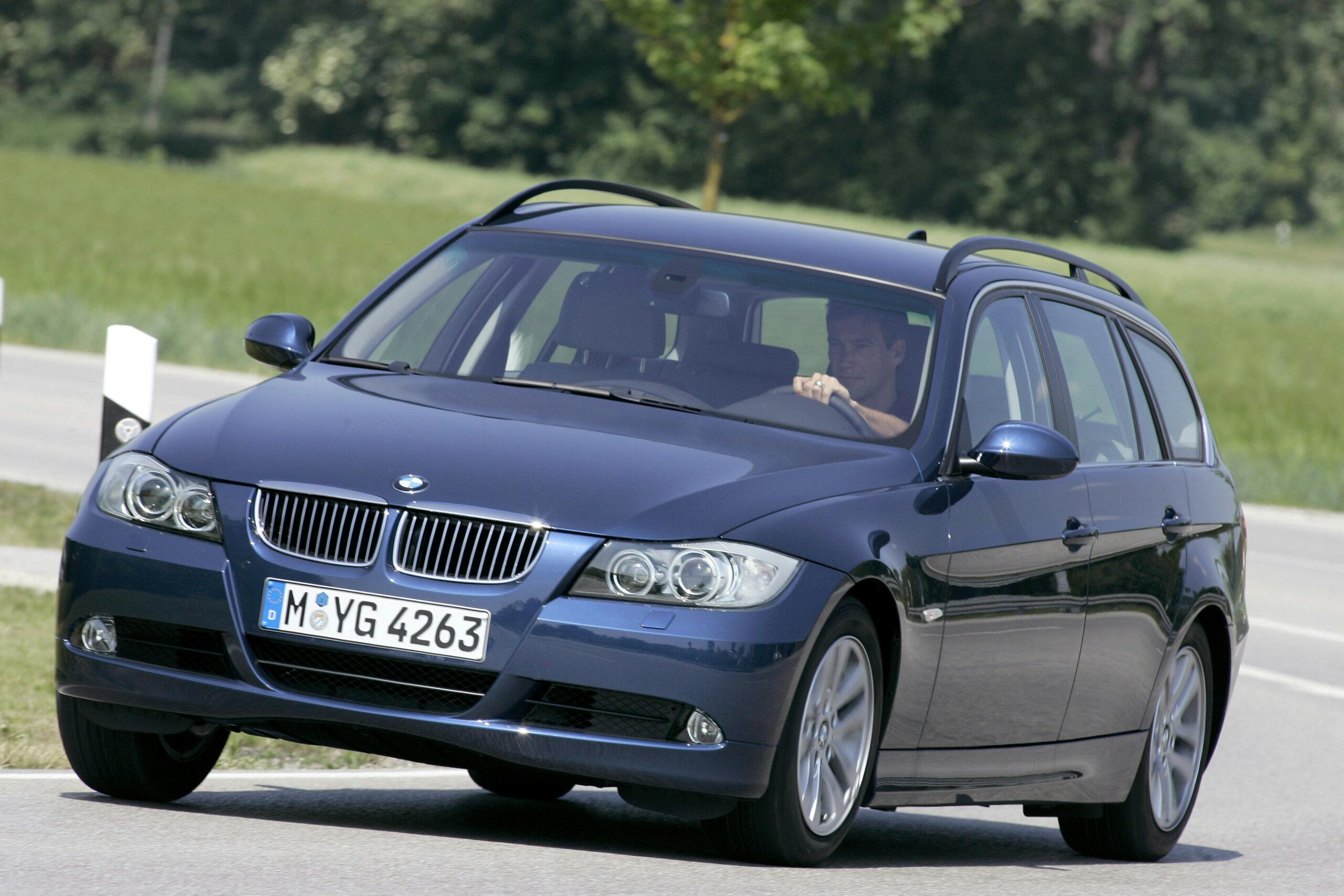
2003–08 Mazda 6 Sport Wagon and 2002–03 Protégé 5

Fun to drive: 3 /5
Reliability and maintenance expense: 4 / 5
Pros: Fun to drive; relatively inexpensive parts and maintenance
Cons: FWD only; horribly rust-prone; lack the safety of Euro wagons
Maybe the most overlooked manual-transmission wagon is the 2002–08, or first-generation (GG1), Mazda 6. While it takes a knock for being FWD-only, the long-roof 6, dubbed the Sport Wagon, was offered with a five-speed manual, most commonly paired with a Ford-supplied Duratec 3.0-liter V-6. It wasn’t a bad setup and made 204 horsepower. Sadly, there was no Mazdaspeed 6 wagon. The vehicle was handsome, reliable, and a decent performer, but outside of the West Coast, they’re getting very hard to find today.
The same can be said for the other Mazda manual wagon, the Protégé 5. Based on the entertainingly simple Protégé sedan, the 5 wasn’t your average hatch, but a small wagon, almost unique in the marketplace in the early aughts, and certainly extinct now. Back in 2001, Car and Driver called its driving dynamics “scintillating” and said that the car had real personality: “Cheeky. Insolent. Pert.” Like the 6, the Protégé 5 seems to hold up well mechanically, and 200,000 miles doesn’t seem uncommon for West Coast cars that haven’t succumbed to body rust. Even though the price delta between the two models was significant when new, nice examples of either the 6 or the Protégé 5 seem to trade in the $6000 to $7000 range.

2009–19 VW Jetta/Golf SportWagen

Fun to drive: 3.5 / 5
Reliability and maintenance expense: 3 / 5
Pros: The newest cars on the list, some of which are still under an impressively long 6-year/72,000-mile post-Dieselgate warranty
Cons: Somewhat underpowered, irrespective of model; the usual Volkswagen quality issues.
Modern VW wagon offerings in the U.S. consist of the Passat, Jetta, and Golf. Manual Passats ended with the B5 generation (1997–2004). The 1.8 Turbo and VR6 cars both came with five-speed manuals, as did the TDI. The oldest are now approaching 30 years old, and consequently, most B5 Passats are worn-out bags of trouble. And as tempting as the unicorn status of a 275-hp, 4Motion (AWD) Passat W8 manual wagon might be, (about 100 were sold in the U.S.), the maintenance hassles of daily-driving a VW this old and complex are way too daunting. A Mk 4 Jetta VR6 manual wagon was a sweet little ride, but they’re mostly gone, too, and I haven’t seen one in at least a decade.
The consolation prize is the fact that late-model Jetta/Golf SportWagens are quite decent cars, and not uncommon with manual transmissions. The most desirable is probably the last of the line—the AWD Golf Alltrack wagon, which was discontinued after the 2019 model year. Manual-transmission Alltracks are still worth close to their original MSRP, in the mid-to-high twenties.
2008–12 Audi A4 Avant
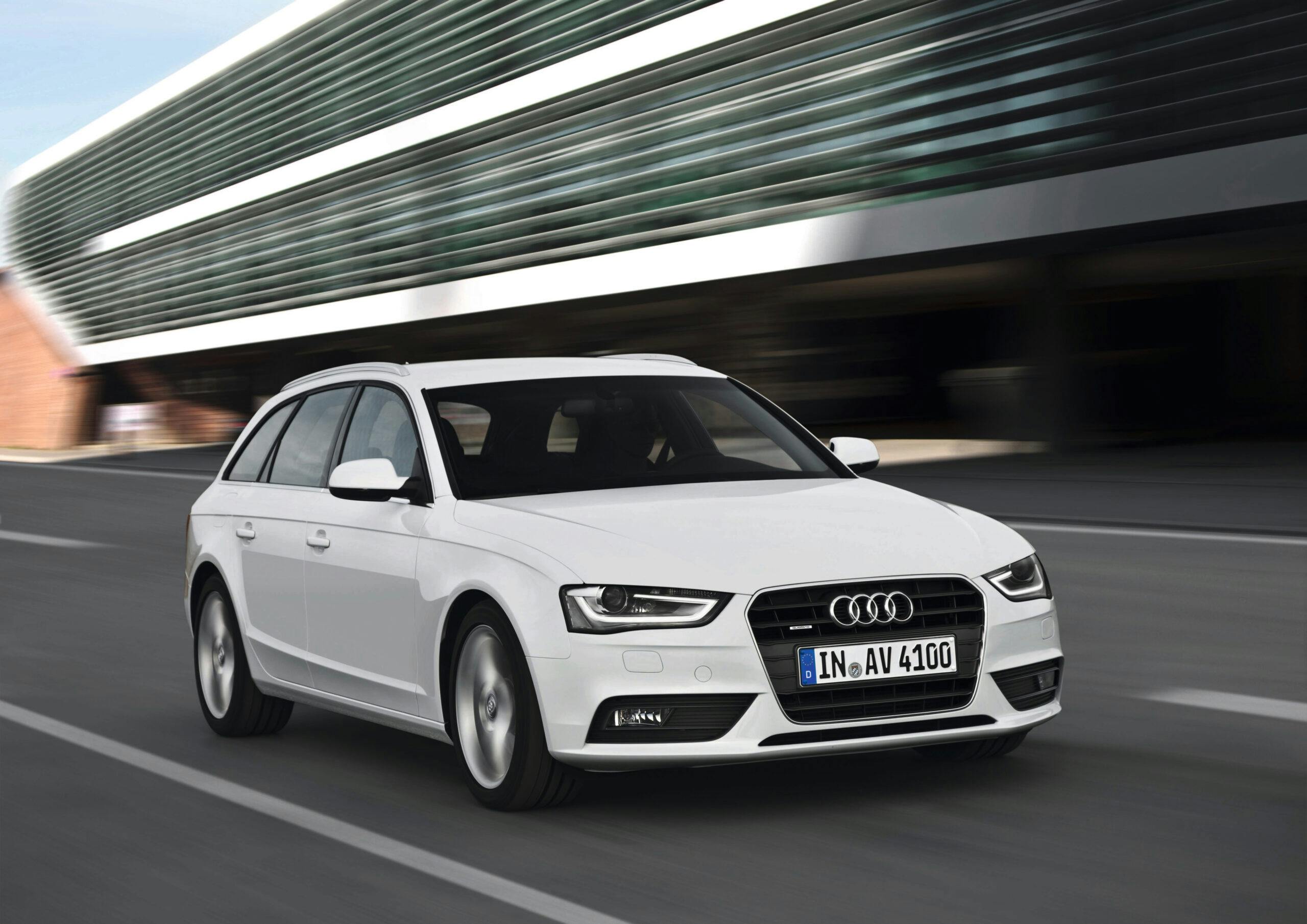
Fun to drive: 4/ 5
Reliability and maintenance expense: 1 / 5
Pros: Beautiful inside and out, excellent driving dynamics
Cons: Abysmal reliability record
Audi has a long history of building sporty wagons with manual transmissions. The 100 (5000) based cars from the 1980s were all equipped with manuals if you opted for the Quattro AWD system. And let’s not forget the Porsche-engineered-and-assembled RS2. These days it’s a blue-chip, $75,000-plus collectible.
The B8 A4 Avant was the last Audi wagon to offer a manual transmission in the U.S. They’re gorgeous inside and out, and lovely to drive, albeit quite scarce with a manual. But having personally known two people whose 2.0L turbo A4s have suffered catastrophic, post-warranty engine failures, and one other whose 50,000-mile car had a quart-every-600-miles oil habit, it’s hard to recommend an A4 to anyone in good conscience.
2003–07 Volvo V70 R
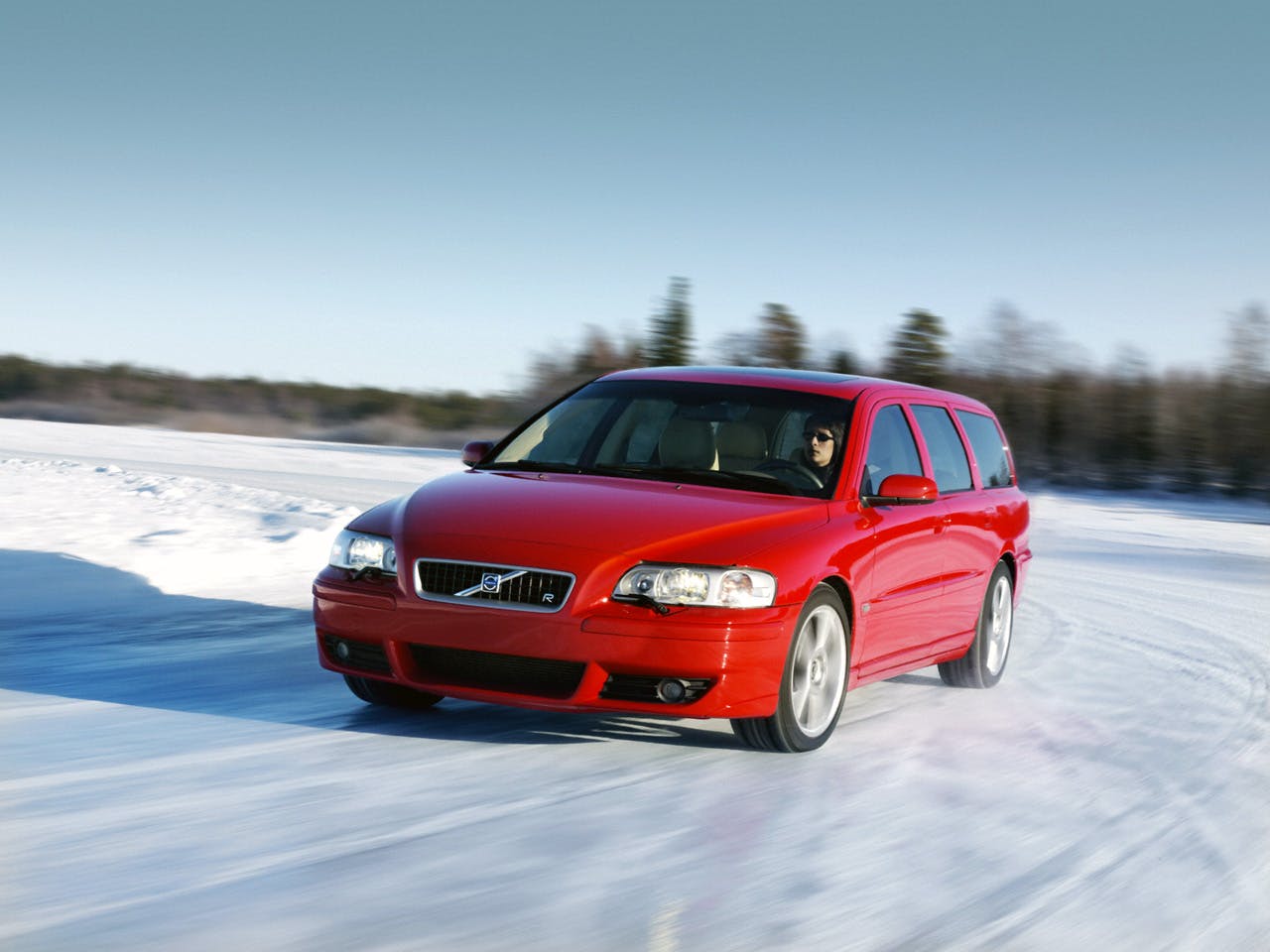
Fun to drive: 5 / 5
Reliability and maintenance expense: 2.5 / 5
Pros: Handsome; insane inline-five turbo engine
Cons: Pricey parts and service
For most of its history in the U.S. prior to the early aughts, Volvo offered a manual-transmission wagon. Outside of one of Paul Newman’s V-8–swapped 740 wagons, the holy grail is almost certainly the P2-generation V70 R wagon. Its maniacal turbocharged inline-5 made almost 300 hp, and while RWD would have been a hoot, the car was offered only in AWD form. Six-speed manuals were rare, and those who opted for this were treated to one of the most artfully designed shifters outside of a gated Ferrari box. Well on their way to being full-fledged collectibles, cars with average miles are mid-teens, and the best, low-mileage cars can break $30,000. A small price to pay for what might be one of the greatest manual-transmission wagons ever.
2005–07 Subaru Legacy 2.5 GT Wagon
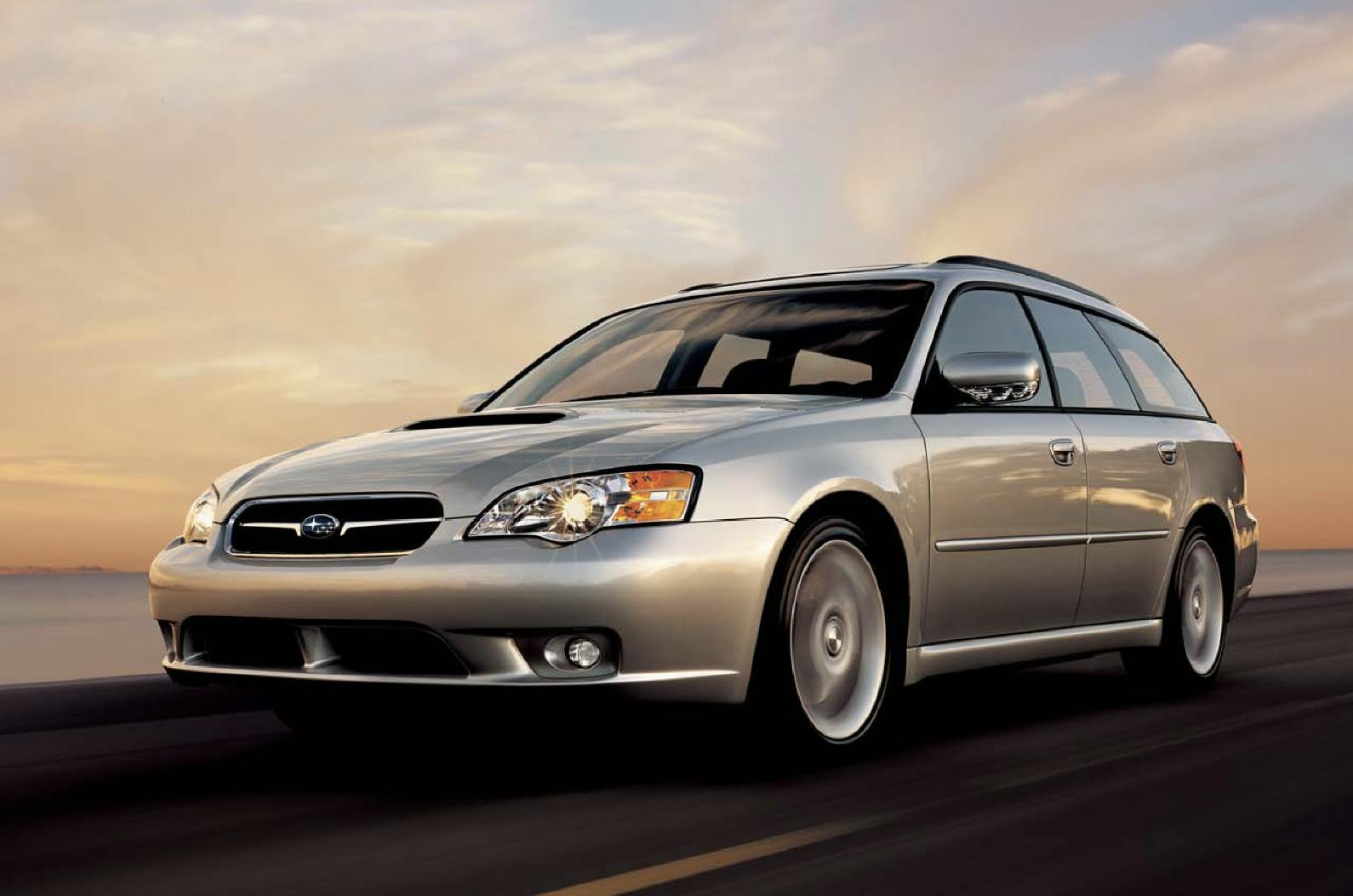
Fun to drive: 5 / 5
Reliability and maintenance expense: 3 / 5
Pros: WRX style, power, and grip; infinitely modifiable
Cons: The usual Subie flat-four head gasket issues every 90,000 miles or so
In the early aughts, the non-Birkenstock wearers in Subie showrooms were drooling over the WRX. You could excuse them for overlooking its more practical sibling, the Legacy 2.5 GT Wagon. With AWD and the same 250-hp 2.5-liter turbo flat-four as the WRX, a five-speed Legacy GT wagon is truly something special. Although it’s the same body as the far more common Outback—albeit with a functional hood scoop, shorn of body cladding, and riding far lower—the Legacy GT Wagon was actually quite handsome. Since one of these is just as tunable as the WRX, finding a stock, manual-gearbox model with low miles is nearly impossible, but the market has yet to catch on to how special these cars are. About $15,000 or so buys a nice one.
2004–11 Saab 9-3 SportCombi
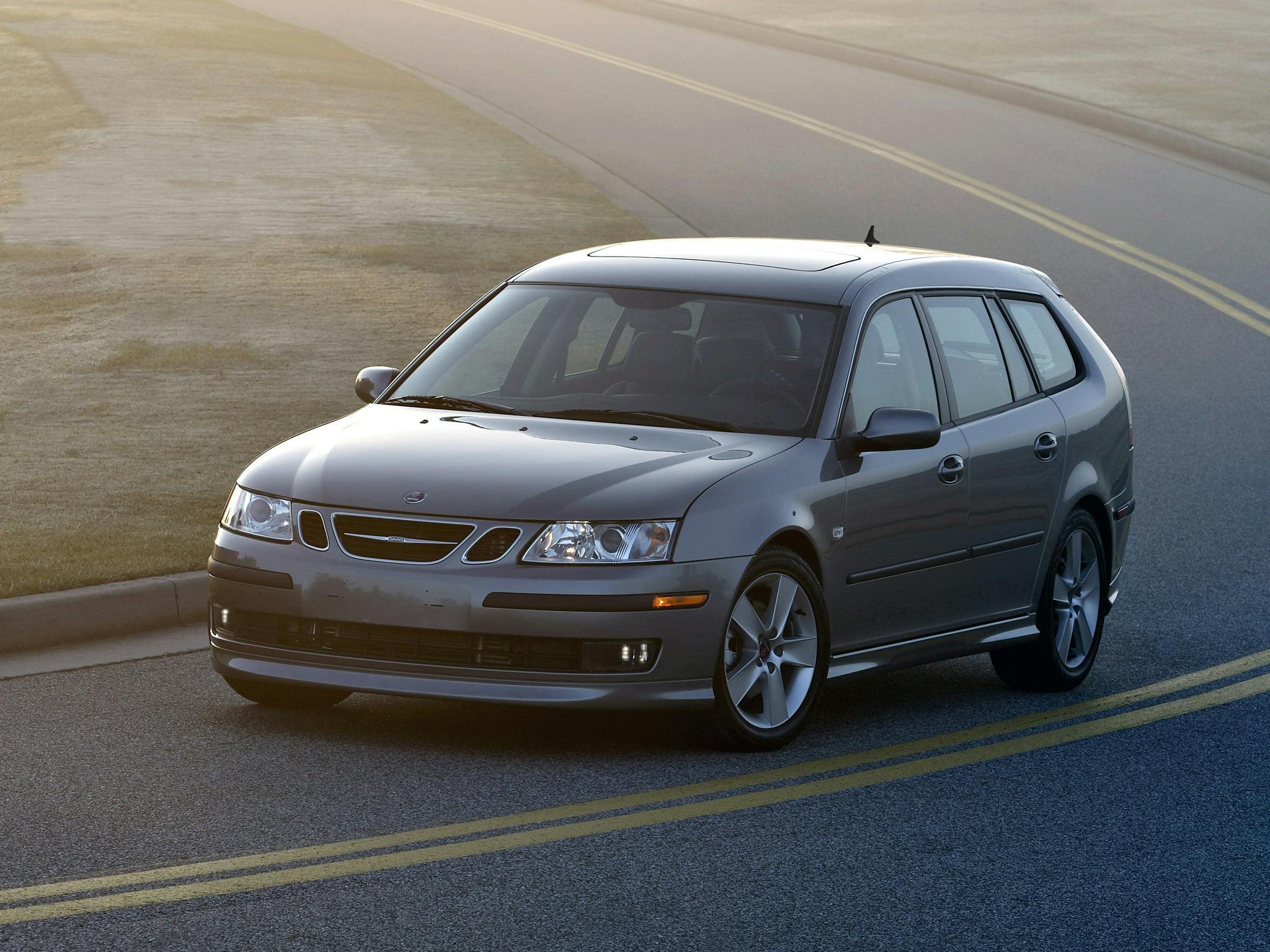
Fun to drive: 3 / 5
Reliability and maintenance expense: 4 / 5
Pros: Quirky looks, nicely appointed inside, GM serviceability, bargain prices
Cons: Orphan status and uncertain support going forward
Saab offered wagons in the U.S. off and on for about four decades, but the only one it sold in volume was the 9-5. Top spec 9-5 Aero wagons with a five-speed are quite rare, and the few good ones that remain generally have asking prices in the ten-grand range. Most, however, are 200,000-mile examples with asks of about half that. Perhaps more interesting, though, is the last-generation 9-3 Combi. Sadly, GM had actually started to do some OK things at Saab right around the time the wheels fell off the Swedish brand. The last generation of the 9-3 and 9-5 were pretty solid, but only the GM Epsilon-based 9-3 was offered as a wagon. As you may have noticed, nearly every Euro brand has to have a clever name for “wagon.” Saab’s, unsurprisingly, was the oddest: “Combi” is Saab for wagon. And quite a decent wagon it was. With its vertical taillights and upswept profile, it was quirky like a Saab should be, and nicely appointed inside.
The 9-3’s 2.0-liter turbo GM Ecotec four managed a wholly adequate 210 hp. Most were FWD, but somewhere around 10 to 20 percent of them were ordered with AWD. Saab called this model the SportCombi X. The manual version of this car is the true 9-3 wagon unicorn. The final version of the 9-3 racked up a reasonable reputation for reliability and maintenance costs. This is backed up by the fact that most of the cars you’ll see advertised have between 150,000 and 225,000 miles on them. FWD manual 9-3 wagons with under 100,000 miles are around $9000 or so. A similar manual 9-3X might bring around $13,000 to $15,000, if it’s really nice. The largely unfounded concerns about parts seem to be keeping Saab values down.
2011–13 Cadillac CTS-V Wagon
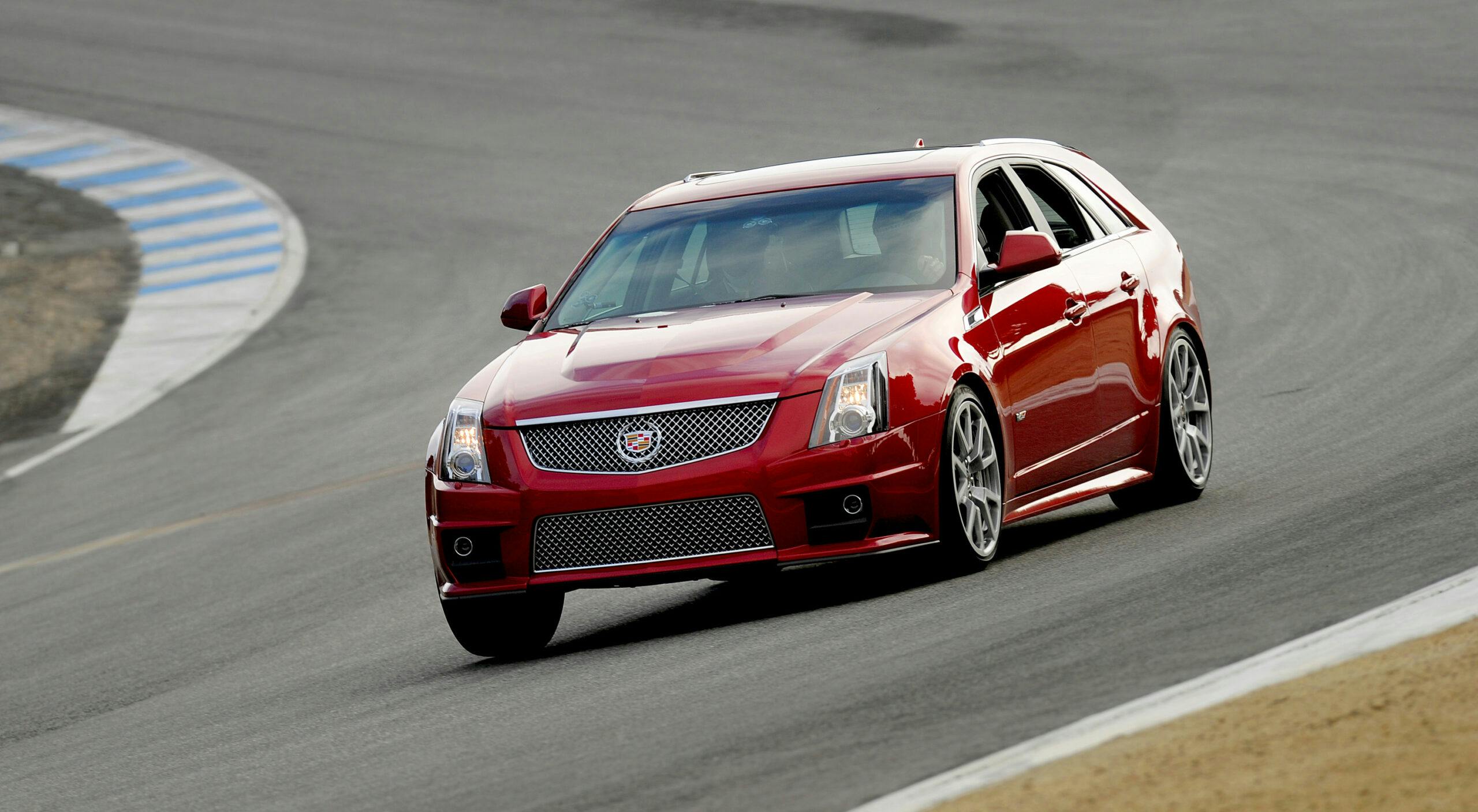
Fun to drive: 5 / 5
Reliability and maintenance expense: 4 / 5
Pros: Insane power and acceleration with braking and chassis to match; wicked good looks
Cons: Six-figure price, rarity
***
Check out the Hagerty Media homepage so you don’t miss a single story, or better yet, bookmark it. To get our best stories delivered right to your inbox, subscribe to our newsletters.


I drove a number of Audi models back in the days when manual transmissions were widely available. I can’t say they gave me any trouble, but then I always assumed they were “warranty” cars and never kept one beyond the length of the warranty (which I hated when I sold my 225 hp 01 TT, I think still my favorite car).
I’ll pass on all of them.
Now a ’65 Chevelle 2-Door wagon…
Or a 64 or 65 2 door falcon wagon!
I started my Subaru career with a 2003 Outback w 5 spd
I wanted our sons to be able to drive a stick.
Car was totaled in Lubbock tx while #1 son was at Texas Tech
It had 180K on the clock
A pickup ran a red light.
No more manual outback’s… bummer
( on #4 now)
I suppose I’ll get a lot of pushback, I need to share my experience. In 2003 I was able to get a 2003 PT Cruiser GT. I had it for 8 years and loved every minute of my ownership other than the rather large turning circle. I added the hi-po PCM in 2004 and would love to find another. Family needs caused me to trade her in in 2011. I keep checking all the different websites looking for one with less than 50K. With the seats removed, it was a perfect ride for our two Greyhounds!
Where do you think the Jaguar X-Type Estate V6 with manual transmission fits in all this? I suggest it might place rather well being largely a Ford power train. I’d have one, but they are pretty rare in these parts.
Our 2005 Jag wag has been a great ski (and everything else) car. Over 135k miles, been above 10,000 feet many, many times in a foot of snow in the dead of winter. Put some Blizzaks or Hakkapeliittas on it and it’s just about unstoppable, no studs required. It has hauled a lot of people, skis, lumber, tools, etc. over the years and been very reliable. Reasonably simple, too, pretty much an analog car. You know, they got over $40k for the Queen’s after she passed!
However, I have to admit that I enjoy driving my E90 wagon more, and my wife prefers her Alltrack. (I’m known as ‘the euro-wagon guy’ in our neighborhood.) The Jag feels a bit heavy, but has a lot of room for ‘stuff’, and if you ever have a flat, the full size unit will fit in the spare tire well that the donut came from, which is nice if you have a trunk full of gear. Overall it is an excellent vehicle, great for road trips. Unfortunately, ours are all automatics, but still quite shiftable, nice in the mountains and twisties. I drove manuals for many years, and I usually don’t miss the clutch as much as I thought I would, especially in traffic. Maybe I’ve gotten old.
I’d grab one in a heartbeat, except in the U.S., only the X-type sedan came with a manual. The Estate didn’t.
The Audi wagon was last available with a manual in the US in 2008, the last year of the B7 generation. No manual B8 wagons
WOW! No mention of the Dodge Magnum!!!!! WTF
Never sold with a manual. “10 Modern Manual Wagons,” in the headline.
Hmmm.. I’ll keep my 1982 Granada GL
Once proud owner of an ’04 V70R with the “spaceball” manual. Amazing car. Such a great noise, solid AWD system (as long as your angle gear didn’t go bye bye), comfortable interior, and lovely to look at. And a great sleeper to people who think “it’s just a Volvo wagon”.
I would like to add my Ford Flex Ecoboost to the list and my 2010 Cadillac SRX and my 1988 745 turbo.
I’m a shooting brake driver since college.
The V is the only choice here. If only there had been a manual transmission option in the Magnum SRT8…
These aren’t wagons, they’re, at best mid-sized.
Where are the Vista Cruisers, Country Squires and Impalas?
Those are wagons.
I’ll take my ’72 Pinto Wagon over these any day. With a few chassis, tire, and wheel tweaks if could handle like the best of them. Wish I still had it, but the rust gremlins got to it.
Where is the Dodge Magnum???
It’s out because it’s only an automatic.
I just picked up a 2014 BMW 328i x-drive wagon and I absolutely love it. 4-cylinder engine pushing 240 horses, modern luxury, safe, speedy, and still looks good.
Definitely wish wagons were more appreciated state-side!